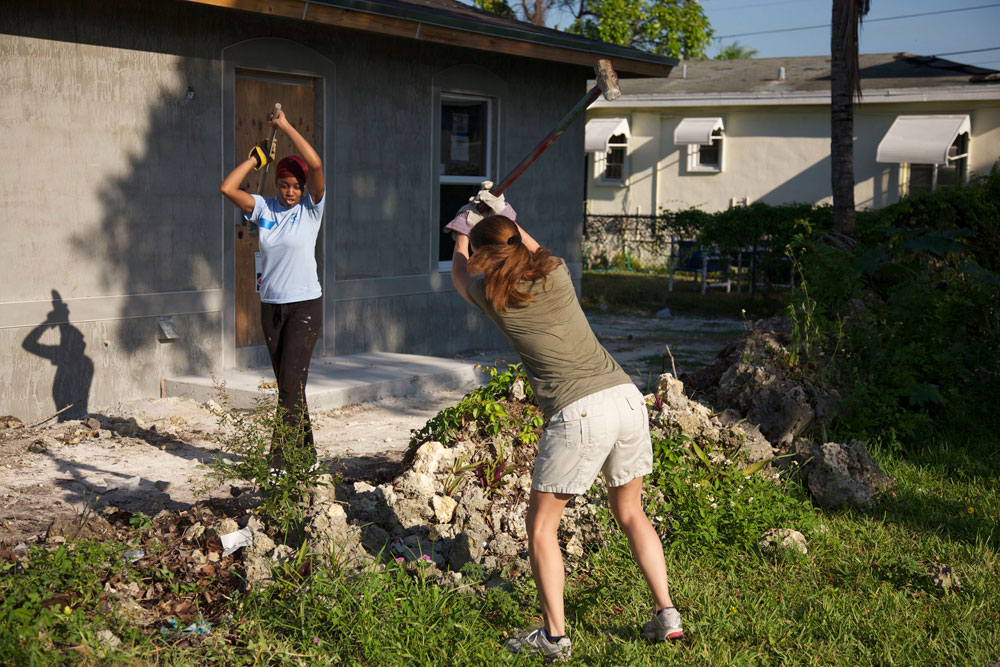
January 24, 2020; Lincoln Journal Star
Communities across the country are looking for solutions to the affordable housing crisis, and with good reason.
According to a recent report from Harvard’s Joint Center for Housing Studies, nearly half (47 percent) of people in the US who rent their homes are cost-burdened, meaning they spend more than 30 percent of their income on housing. While 83 percent of low-income people fall into this category, many people with higher incomes who live in cities are cost burdened as well. According to the report, 46 percent of people living in large cities who make $45,000 to $74,999 were technically cost burdened. This speaks to the dramatic increase of housing costs in the nation’s urban centers.
In fact, in some cities, housing that is affordable has virtually vanished. Nationally, about four million low-rent units (costing $800 per month or less) disappeared between 2011 and 2017; in areas like Seattle, Austin, and the San Francisco Bay Area, as much as 67 percent of low-rent housing disappeared in those years. These trends, coupled with stagnant wages, mean that fewer people can afford to rent homes, much less purchase them.
While there have been some bold initiatives, such as Enterprise Community Partners’ Affordable Housing Breakthrough Challenge, nonprofits and communities alike are still searching for ways to expand affordable housing. Although rental housing gets much of the publicity, homeownership programs that target low- and moderate-income people also help people get affordable homes while building wealth.
One strategy in particular is making a resurgence: the reuse of uninhabited and abandoned properties for low-income affordable homeownership. One nonprofit using this strategy is South of Downtown Community Development Organization (SDCDO) in Lincoln, Nebraska. According to a 2018 report by the US Department of Housing and Urban Development, Lincoln faces an affordable housing shortage of 5,000 units.
In response, SDCDO is implementing a multiyear community revitalization plan that incorporates affordable rental housing as well as affordable homeownership options. According to Peter Salter of the Lincoln Journal Star, SDCDO has purchased older vacant homes in Lincoln that are beyond repair, demolished them, and builds affordable housing in their place. By using this strategy, SDCDO is not only creates affordable housing, but transforms neighborhoods.
Sign up for our free newsletters
Subscribe to NPQ's newsletters to have our top stories delivered directly to your inbox.
By signing up, you agree to our privacy policy and terms of use, and to receive messages from NPQ and our partners.
In addition to Lincoln, last year Roanoke, Virginia selected Total Action for Progress to manage the city’s new land bank program. Known as TAP, the multiservice organization focuses on education, employment training, and other services including housing. Through this program, TAP manages properties that the city of Roanoke has secured due to unpaid taxes, which will both address blighted homes and open up new avenues for affordable housing. The use of land banks to restore properties, turning liabilities into assets, is something that NPQ has written about in the past, most notably when land banks helped restore 1,300 properties in Ohio in five years.
Similar programs exist throughout the US, including Builders of Hope Community Development Corporation in Dallas, Community One’s Whole-House Rehab Program in Evansville, Indiana, and the Reformed Church of Highland Park Affordable Housing Corporation, which is located in New Jersey and has developed more than 20 affordable housing properties statewide. Recently, this organization was awarded the “Outstanding Municipal Partner Award” for its work. This award was from the Housing and Community Development Network of New Jersey, which NPQ featured in December 2018.
Public entities are also using this strategy to drive local change. For example, the city of Chicago’s Large Lots program is partnering with LISC Chicago to help buyers be anchored as homeowners, and a similar effort is available through the Illinois Housing Development Authority, which offers the Abandoned Property Program to develop affordable housing using abandoned property.
Yet another example is in Tacoma, Washington, where the Homeownership Center Northwest, a nonprofit started in 1993, used abandoned properties in the hilltop neighborhood to develop both low-income homeownership opportunities. The nonprofit, one of the best known for employing this strategy, working in partnership with the city, has to date turned more than 200 single-family unit homes into affordable homes.
Many nonprofits assist homebuyers by rehabbing the homes for them. However, one nonprofit, Acts Housing located in Milwaukee, Wisconsin, assists homeowners themselves in turning distressed homes into livable homes. Part of Acts Housing’s unique model is that qualifying homebuyers can borrow up to $50,000 from the organization to purchase and repair abandoned homes.
Ultimately, as both nonprofits and city governments look for new ways to increase the affordable housing stock in their communities, looking at existing and distressed homes is a viable option. By restoring abandoned homes, nonprofits and governments can address multiple neighborhood issues, while assisting low income and moderate-income families to build wealth at the same time.—Derrick Rhayn













